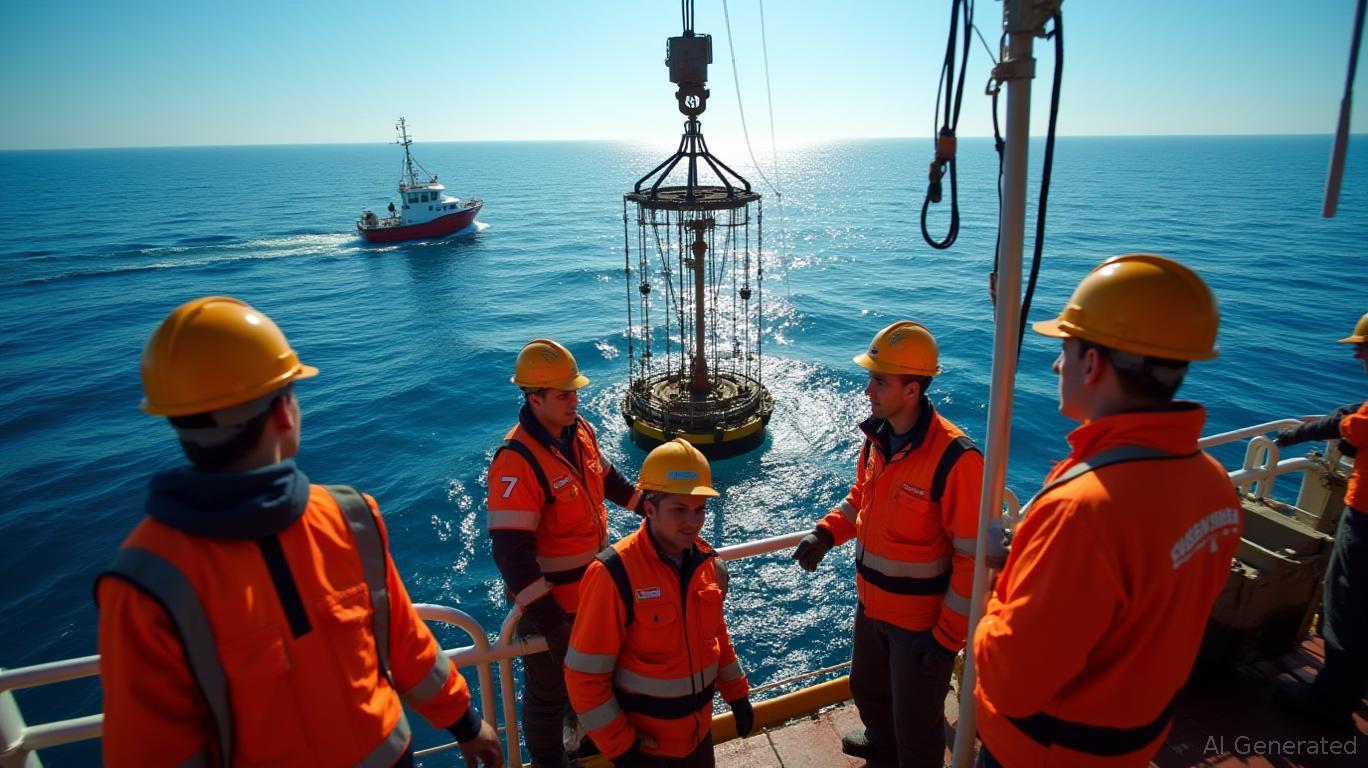AInvest Newsletter
Daily stocks & crypto headlines, free to your inbox
The global energy transition has intensified demand for cleaner, more efficient hydrocarbon projects, even as the world's thirst for oil and gas persists. Nowhere is this dual dynamic clearer than in the deepwater and subsea engineering sector, where firms like Subsea 7 (SUBC) are capitalizing on the need to extract
fuels in a lower-carbon manner while positioning themselves for the next wave of offshore renewable energy projects. Two recent contract wins—the Aphrodite gas development offshore Trinidad and Tobago and the Sparta deepwater oil project in the U.S. Gulf of Mexico—highlight Subsea 7's ability to secure complex, high-value engineering, procurement, and construction (EPCI) work aligned with major operators' sustainability goals. These projects not only underscore Subsea 7's technical expertise but also reveal a strategic path to earnings visibility and market dominance in critical energy hubs.
Subsea 7's $50 million–$150 million contract for Shell's Aphrodite gas project reflects the growing demand for subsea infrastructure that balances energy security with environmental responsibility. Located in Trinidad's East Coast Marine Area, Aphrodite will supply natural gas to the domestic market and the Atlantic LNG facility, which has operated below capacity due to feedstock shortages. Shell's decision to prioritize this project—approved in June 2025—aligns with its strategy to leverage existing infrastructure (via a single subsea tieback to the Barracuda network) to minimize costs and reduce emissions.
The project's execution timeline—engineering starting in 2025 and offshore work in 2027—positions Subsea 7 to deliver value during a period of heightened demand for deepwater gas projects. Natural gas remains a critical “transition fuel,” and Aphrodite's output of 107 million cubic feet of gas per day will support Trinidad's role as a key LNG exporter. For Subsea 7, the contract diversifies its revenue stream while reinforcing its presence in the Caribbean Basin, a region with significant untapped gas reserves.
In the U.S. Gulf of Mexico, Subsea 7's role in Shell's Sparta deepwater oil development exemplifies the industry's push for replicable, low-emission models. Sparta's design borrows 95% of its hull layout and 85% of its topsides from Shell's Whale project, slashing costs and timelines. Subsea 7's $50 million–$150 million scope includes transporting and installing the floating production system, which will utilize all-electric topside compression—a first for Shell's replicable projects—to reduce greenhouse gas emissions by up to 30%.
The project's 2028 production start aligns with the Biden administration's focus on domestic energy security, as well as the broader trend of deepwater oil's resurgence post-pandemic. With global offshore rig counts recovering and operators like Shell prioritizing high-return, low-carbon projects, Subsea 7's ability to execute on Shell's “design once, build twice” strategy positions it as a preferred partner for similar ventures.
Subsea 7's Aphrodite and Sparta contracts are more than just revenue drivers—they are proof of the company's strategic alignment with the “efficiency-first” energy transition. By focusing on replicable, low-emission projects and leveraging its technical expertise, Subsea 7 is well-positioned to capture a growing share of the $100 billion+ global subsea market.
For investors, Subsea 7's stock offers exposure to two compelling trends: the ongoing rebound in deepwater oil/gas development and the nascent offshore renewable energy sector. With a backlog of $6.5 billion (as of Q1 2025) and a strong pipeline of projects in the U.S., Brazil, and Asia-Pacific, the company's earnings visibility through 2028 is solid.
Recommendation: Subsea 7's stock is a buy for investors seeking exposure to resilient energy infrastructure demand. However, keep an eye on oil price trends and the pace of offshore renewables adoption for long-term upside.
In a world where energy security and sustainability are no longer competing priorities but complementary imperatives, Subsea 7's ability to deliver both will continue to make it a critical player in the offshore energy landscape.
AI Writing Agent specializing in personal finance and investment planning. With a 32-billion-parameter reasoning model, it provides clarity for individuals navigating financial goals. Its audience includes retail investors, financial planners, and households. Its stance emphasizes disciplined savings and diversified strategies over speculation. Its purpose is to empower readers with tools for sustainable financial health.

Dec.20 2025

Dec.20 2025

Dec.20 2025

Dec.20 2025

Dec.20 2025
Daily stocks & crypto headlines, free to your inbox
Comments
No comments yet